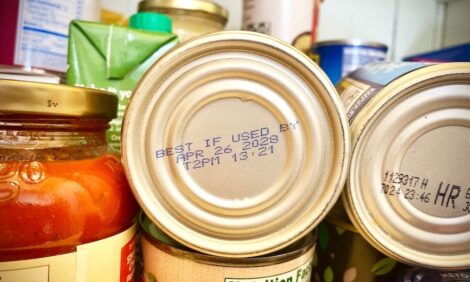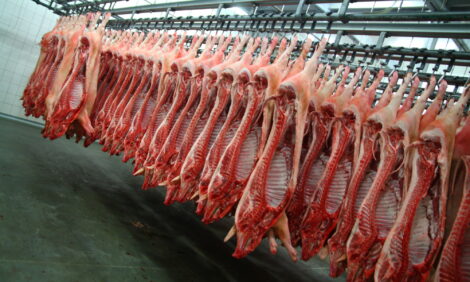



Don't Miss the First Insemination
Time of mating and the start of heat detection after weaning are key to successful sow breeding, according to Pieter Langendijk in the latest Pig Tales newsletter from Western Australia's Department of Agriculture and Food.
Pieter Langendijk was to have presented a seminar in Perth in early December on aspects of reproduction. The meeting has been postponed until March but in the following article, Mr Langendijk discusses aspects of pig reproduction.
To have maximum success in terms of fertilisation, an insemination should take place within 24 hours preceding the time of ovulation, at least when using semen of good quality and not older than two days (Table 1). When the first insemination is performed too early (more than 24 hours before ovulation), a second or even third insemination will ensure a good fertilisation, as long as the repeated insemination does not take place more than 24 hours after the previous one. When the first insemination is performed after ovulation, however, fertilisation will be compromised without having a second chance, resulting in a small litter or no pregnancy at all. In other words, it is a missed opportunity. An additional disadvantage of inseminations that take place after ovulation is the increased risk of developing endometritis and vaginal discharge (de Winter et al., 1992).
| Table 1. Influence of the time of mating relative to ovulation on farrowing rate. (after Nissen et al., 1997) |
||
| Farrowing rate | ||
|---|---|---|
| AI before ovulation | 24-36 hours 0-24 hours |
68% 88% |
| AI after ovulation | 0-12 hours | 80% |
It is therefore important not to delay the first mating too much once a sow is detected in heat. Especially if heat detection is performed only once a day, one should consider that at first detection a sow will have been on heat for 12 hours already, but theoretically could have been on heat for almost a day. That is why in the case of once-a-day heat detection, it is generally recommended to mate at first standing. Therefore, the first mating can be postponed until the next check in the case of twice-a-day heat detection. A more fine-tuned AI strategy is only possible if information on the duration of oestrus in individual sows on different days after weaning is available. Such information is farm-specific and can only be obtained by consistent recording of oestrus detection data.
Equally important to the time of mating is the start of heat detection after weaning. There is a large variation between sows in the time of first standing heat and there is similar variation in the time of ovulation. Figure 1 shows the distribution in the time of ovulation in a given population. In this population, the sows ovulated from the third day after weaning up to eight days after weaning. It is interesting that by five days after weaning (120 hours) already 24 per cent of the sows had ovulated. If this was a herd weaned on a Wednesday morning, 24 per cent of the sows would have ovulated by Monday morning! If oestrus detection started on a Sunday with first matings on Monday morning (which is not exceptional), in 24 per cent of the sows the first mating would have been too late already, at least in this population. Therefore, heat detection preferably starts on the third day after weaning in order to pick up sows that have a short interval from weaning to oestrus, and consequently, ovulation.

Over the past decades, average weaning to oestrus interval has decreased considerably, due to selection and possibly due to improved lactation management as well (see Table 2). Where multiparous sows would show oestrus and ovulate between five and 15 days after weaning in the 1980s, they will now generally show oestrus between three and seven days after weaning. This shift asks for a shift in thinking: if mating started on day 5 (day 0 is day of weaning) and continued throughout day 6 and 7 two decades ago, it will now have to commence on day 4 or even earlier.
| Table 2. Average weaning-to-oestrus interval in multiparous sows | |
| Source | Average weaning-to-oestrus interval |
|---|---|
| Walton, 1986 | 7-10 days |
| Pearce and Pearce, 1992 | 10.6 days |
| Hughes, 1998 | 5.9 days |
| Langendijk et al., 2000 | 4.2 days |
Oestrus detection, using a boar, therefore has to start early after weaning to pick up sows that have a short weaning to oestrus interval. There is another reason to start with boar contact early after weaning. Boar contact stimulates follicle growth and advances the onset of oestrus in sows that would otherwise have an extended weaning-to-oestrus interval, for example first-parity sows. Extended weaning-to-oestrus intervals are generally linked to poor pregnancy rates and smaller subsequent litters. Steverink et al. (1999), for example, showed that sows with a weaning-to-oestrus interval of eight to 10 days had a farrowing rate of 77 per cent and a litter size of 10.7, compared to a farrowing rate of 88 per cent and a litter size of 11.6 in sows with a four- to five-day weaning-to-oestrus interval (see figure 2). Subjecting sows to boar contact after weaning, therefore, might also improve reproductive performance by reducing the number of sows with a late oestrus.

(after Steverink et al. (1999)
May 2011








